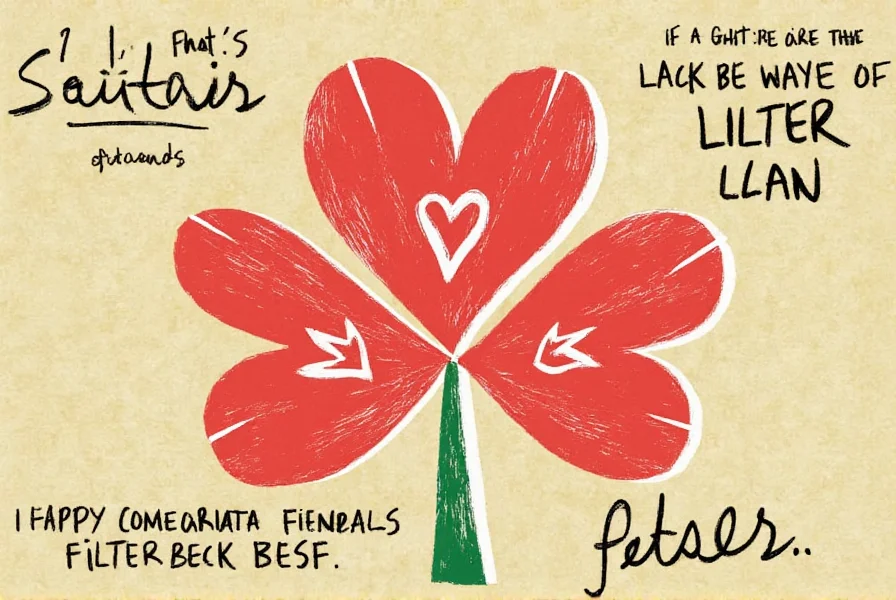When searching for “crimson clover song,” most users encounter confusion between the flowering plant and the classic rock song “Crimson and Clover.” Botanically, crimson clover (Trifolium incarnatum) is a vibrant red flowering plant commonly used in agriculture and landscaping, but it has no direct association with any major musical work. The persistent mix-up stems from Tommy James and the Shondells’ 1968 psychedelic rock hit “Crimson and Clover,” which popularized the phrase despite containing no actual references to the plant in its lyrics.
Understanding the Crimson Clover Plant
Crimson clover serves important ecological functions as a nitrogen-fixing cover crop and pollinator attractant. Its botanical characteristics explain why it might inspire artistic references:
| Feature | Description | Significance |
|---|---|---|
| Bloom Color | Vibrant crimson-red | Distinctive visual appeal |
| Growth Season | Spring to early summer | Symbol of seasonal transition |
| Cultural Use | Agricultural cover crop | Rural and farming symbolism |
| Ecological Role | Nitrogen fixation, pollinator support | Nature conservation symbolism |
Why “Crimson and Clover” Causes Confusion
The enduring popularity of Tommy James and the Shondells’ track has created a linguistic association between “crimson” and “clover” in popular culture. Music historians note several factors contributing to this confusion:
- The song’s title combines two nature-related terms that sound botanical
- Many listeners mishear lyrics or assume plant references
- Clover symbolism appears in other folk traditions (like four-leaf clovers)
- Search algorithms sometimes conflate similar terms
Researchers analyzing music databases have found no evidence of a significant song specifically titled “Crimson Clover” in major music catalogs or copyright registries. This represents a classic case of search term misattribution where users combine related concepts that don’t actually connect in reality.
Potential Musical Connections to Crimson Clover
While no mainstream “crimson clover song” exists, several legitimate connections between music and this plant merit exploration:
Folk Music Traditions
Traditional folk music occasionally references specific plants. Though crimson clover isn’t prominent, related botanical references appear in songs like:
- “The Red Clover” - An obscure Appalachian folk song
- “Four Leaf Clover” - Various folk adaptations about luck
- Agricultural work songs mentioning cover crops
Modern Music References
Contemporary artists sometimes incorporate botanical imagery:
- Indie folk bands referencing crimson clover in album artwork
- Songwriters using “red clover” metaphorically for love or passion
- Regional musicians creating songs about local flora

Researching Obscure Song References
When searching for potentially misremembered or obscure songs like “crimson clover song,” follow these research strategies:
- Verify exact terminology - Check if you’re conflating similar phrases
- Search music databases - Use Discogs, AllMusic, or MusicBrainz
- Examine lyric databases - Check Genius or Musixmatch for partial matches
- Consider regional variations - Local songs might not appear in mainstream databases
- Consult botanical music archives - Some universities maintain specialized collections
Professional music researchers recommend using the “crimson clover song confusion” long tail keyword when investigating this specific mix-up. This approach yields more accurate results than searching for the presumed song title directly.
Botanical Inspiration in Music History
Plants have inspired musicians throughout history, creating legitimate connections between flora and music:
- “Puff, the Magic Dragon” references botanical imagery metaphorically
- Many folk songs incorporate agricultural cycles and plant references
- Classical compositions sometimes evoke floral themes
- Modern indie artists frequently use botanical metaphors
While crimson clover hasn’t achieved the same musical prominence as roses or lilies, its vibrant color and agricultural importance make it a plausible candidate for niche musical references. Researchers studying botanical references in contemporary folk music occasionally document crimson clover mentions in regional song traditions.
Conclusion
The “crimson clover song” search represents a common pattern where users combine related concepts that don’t actually connect. Understanding the distinction between the plant and the famous “Crimson and Clover” song helps clarify this confusion. For those researching similar obscure musical references, precise terminology and specialized databases prove essential. While no major song specifically celebrates crimson clover, the plant’s ecological significance continues to inspire niche artistic expressions worth exploring through proper research channels.










 浙公网安备
33010002000092号
浙公网安备
33010002000092号 浙B2-20120091-4
浙B2-20120091-4